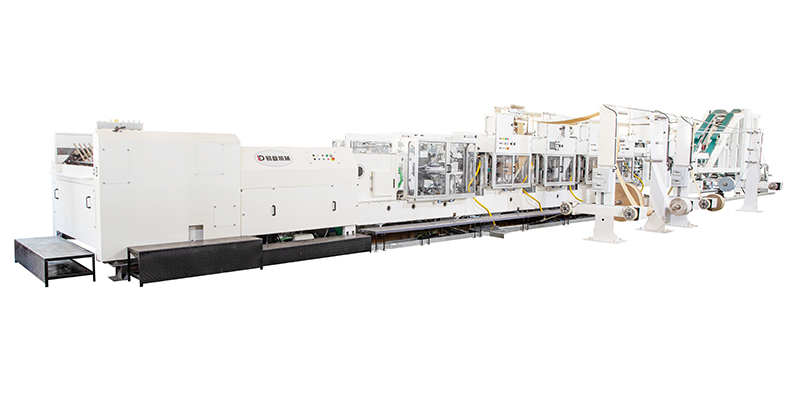Revolutionizing Packaging Efficiency: The Next-Gen 5G-Connected Paper Bag Machine
Release time:2025-05-19 Classification:Knowledge
The packaging industry is undergoing a transformative shift with the integration of advanced connectivity solutions, and the emergence of the 5G-connected paper bag machine stands at the forefront of this evolution. Combining high-speed wireless communication with precision engineering, this innovative machinery is redefining production workflows, sustainability practices, and operational agility in modern manufacturing environments.

The Role of 5G in Industrial Automation
5G technology, characterized by ultra-low latency, high bandwidth, and seamless connectivity, has unlocked unprecedented opportunities for industrial automation. Unlike traditional wired systems or slower wireless protocols, 5G enables real-time data transmission between machines, sensors, and control systems. For paper bag manufacturing, this translates to instantaneous adjustments in production parameters, remote diagnostics, and predictive maintenance—capabilities that minimize downtime and optimize output.
Key Features of the 5G-Connected Paper Bag Machine
- Real-Time Monitoring and Analytics
Embedded IoT sensors within the machine collect granular data on operational metrics such as motor performance, material tension, and cutting accuracy. Through 5G connectivity, this data is transmitted to centralized dashboards where AI-driven algorithms analyze trends, flag anomalies, and recommend corrective actions. Operators gain actionable insights to enhance quality control and reduce waste. - Predictive Maintenance
Traditional maintenance schedules often rely on fixed intervals, leading to unnecessary disruptions or unexpected failures. The 5G-connected system employs vibration sensors and thermal imaging to monitor component health continuously. By detecting early signs of wear or misalignment, the machine triggers maintenance alerts before critical breakdowns occur, extending equipment lifespan and cutting repair costs. - Remote Configuration and Updates
Manufacturers can deploy firmware updates or recalibrate production settings remotely via secure 5G networks. This eliminates the need for on-site technicians for routine tasks, reducing travel expenses and accelerating response times. For global operations, this capability ensures uniformity in production standards across geographically dispersed facilities. - Enhanced Energy Efficiency
Dynamic power management systems, synchronized through 5G, adjust energy consumption based on real-time production demands. During idle periods, non-essential components enter low-power modes, while peak loads are balanced to prevent grid strain. Such optimizations align with sustainability goals by lowering carbon footprints.
Applications Across Industries
The versatility of the 5G-connected paper bag machine makes it ideal for diverse sectors:
- Food Packaging: Ensures compliance with hygiene standards through contamination-resistant designs and rapid batch adjustments for custom-sized bags.
- Retail: Supports high-speed production of branded paper bags with variable print designs, catering to seasonal campaigns or promotional events.
- E-Commerce: Delivers durable, eco-friendly packaging solutions optimized for automated sorting and logistics systems.
Addressing Sustainability Challenges
As global regulations phase out single-use plastics, paper bags have emerged as a preferred alternative. The 5G-connected machine further amplifies sustainability efforts by:
- Utilizing recycled or FSC-certified materials with precision cutting to minimize scrap.
- Enabling energy-efficient production cycles that reduce overall resource consumption.
- Supporting closed-loop recycling programs through data traceability, ensuring materials are responsibly sourced and reused.
Future Prospects and Industry Impact
The adoption of 5G-connected machinery signals a broader trend toward smart manufacturing ecosystems. As networks expand and edge computing capabilities mature, future iterations of these machines could integrate augmented reality (AR) for operator training or blockchain for supply chain transparency. Additionally, interoperability with other 5G-enabled systems—such as autonomous guided vehicles (AGVs) or smart warehouses—will foster end-to-end automation, positioning manufacturers to thrive in an era of Industry 4.0.
The 5G-connected paper bag machine exemplifies how cutting-edge technology can elevate traditional manufacturing processes. By harnessing the power of high-speed connectivity, real-time analytics, and sustainable design principles, this innovation not only boosts productivity but also aligns with global demands for greener, smarter industrial solutions. As industries continue to embrace digital transformation, such advancements will remain pivotal in shaping a resilient and efficient future for packaging.






